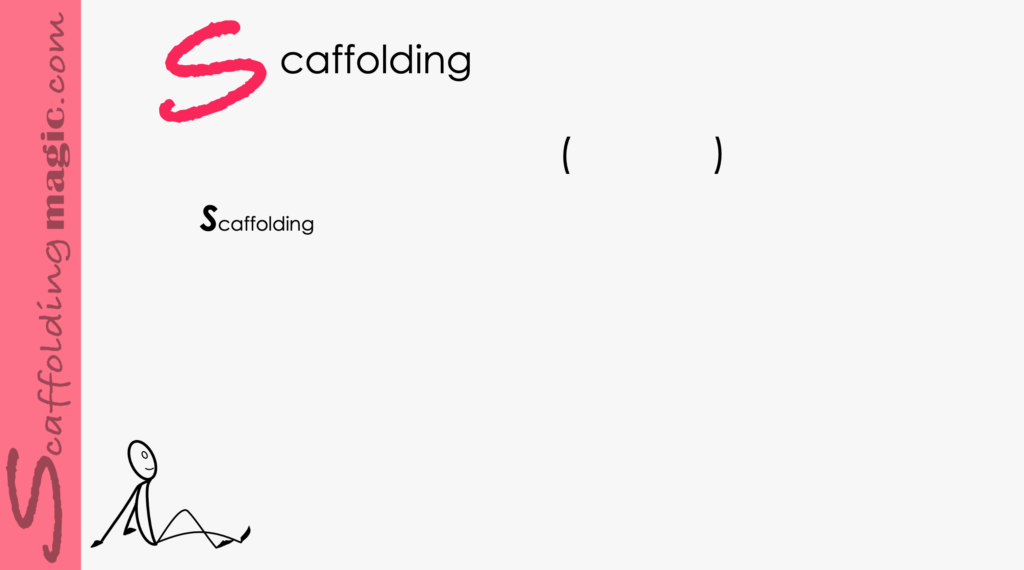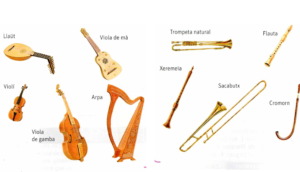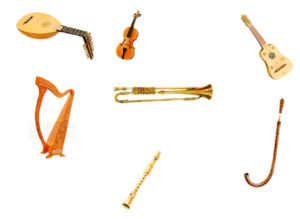You caught a beauty!!!
Download PDF of scaffold here.
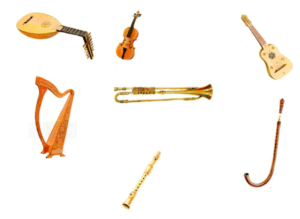
Download PDF of scaffold here.
theory behind scaffold…
Using scaffolds is one way of breaking the traditional teacher-centred model of all knowledge coming from one sole source (the persona at the front of the room.) Scaffolds help students to learn and store information so that they become reliable warehouses of knowledge.
How can we create this dynamic? Well one way is to give our students the opportunity to use visual memory. You’ll see how this promotes active participation in assimilating lower-level fact-based information. We need a strong foundation of facts to be able to process information and then reach our own conclusions – higher-level progression.*
The example below uses material for a music class (taught in Valencian), so you’ll see how you can use it for virtually any subject taught in any language.
*Read more about Bloom’s Taxonomy of thinking at this site.
step by step...
1 Choose 6-10 images and/or text that are key to the unit you are about to begin. (See example to the right of two pages from a Student Book in a music class given in Valencian.)
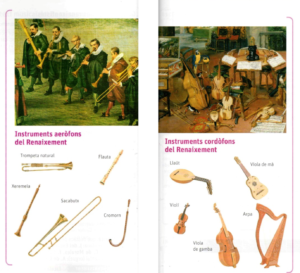
- Place the images on slides in a PPT that you can project and where everyone in the class can see easily, or print them out and give one set to each group.
- Explain to students that they are going to see images (and /or text) for 30 seconds and then will write down everything they can remember about all of it.
- On your signal, the Moderator of each group turns the paper over (or you turn off the slide in the PPT) and each students has 60 seconds to write down everything they can remember – images and text.
(The first time, you may want to give the students the opportunity to see the images again for another 30 seconds, just to get used to the dynamic.)
- Group members then work together to check each other’s work and fill in any information they missed,
In this example, students see images of instruments with their names in Valencian for 30 seconds. They then have 60 seconds to write the names of those instruments under the appropriate image. (See example below.)
- When you have shown all the slides or students have interacted with all the printed images, give the lower- and higher-order thinking question about the visual and/or linguistic information. Students can use the notes they’ve taken to answer these questions, but they can’t look at the images/text again. (See examples below.)
Example of Lower and Higher-Level Thinking Questions:
- Can a flauta can be played without using your mouth?
- How could a person in a wheelchair play an arpa easily?
- Why does the llaüt have a bent neck?
- Which instrument has the most moving parts?
- Formative Assessment: Ask open-ended questions related to the original slide and that has a basis in the closed questions you included in the second slide.
- Reflection: Students write 150-200 words on how effective the dynamic was in their assimilation of the information.



Scaffoldingmagic.com is your entryway into DYNAMIC bilingual learning methodologies, such as Phenomenon-Based Learning, CLIL, EMI, and ESL. You’ll find ways to implement critical thinking tools (DOK) to promote higher level thinking, the growth mindset, instill an ethic of excellence, deep reflection on learning, and all through multi-cultural, interdisciplinary activities. We have the keys to turning competences into action and to creating collective efficacy in your school so you move ahead as a unified, enthusiastic team.

